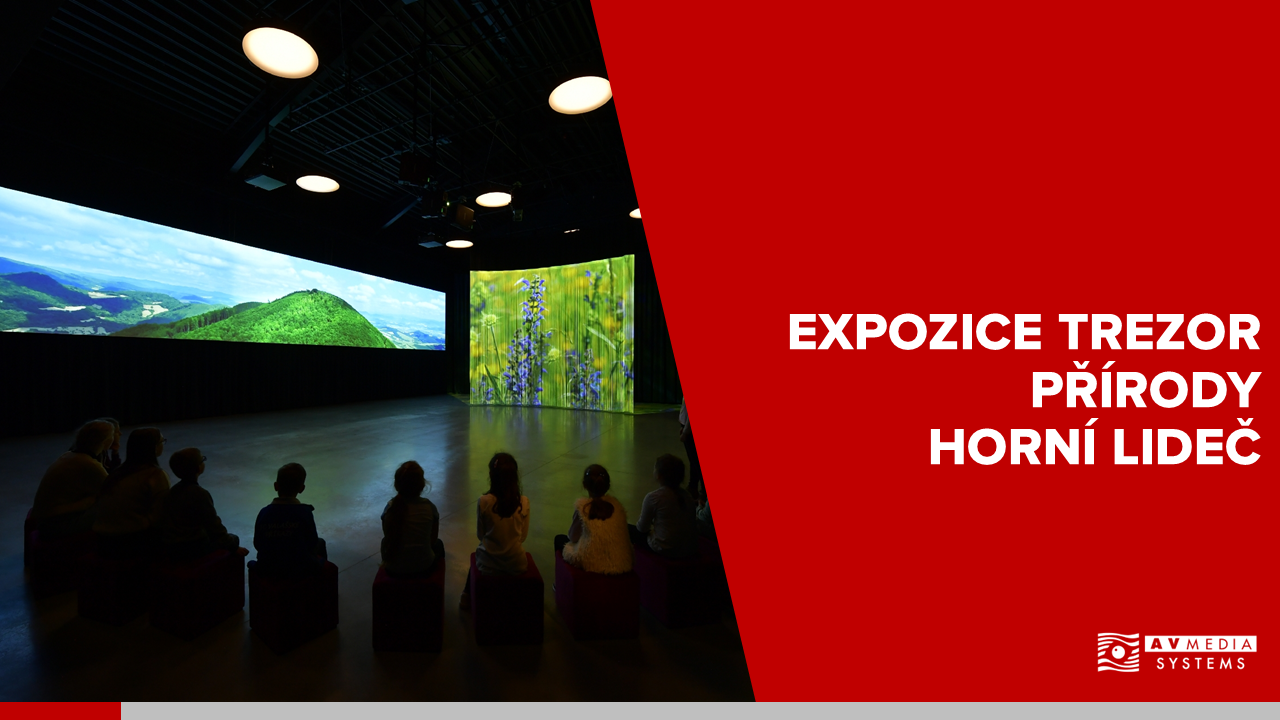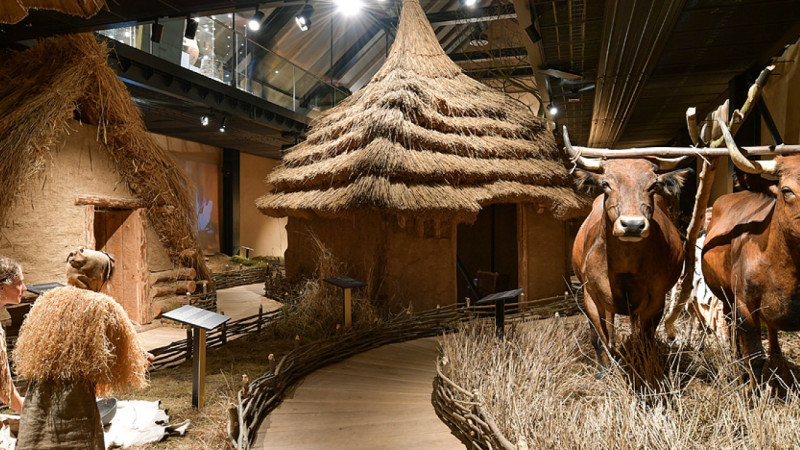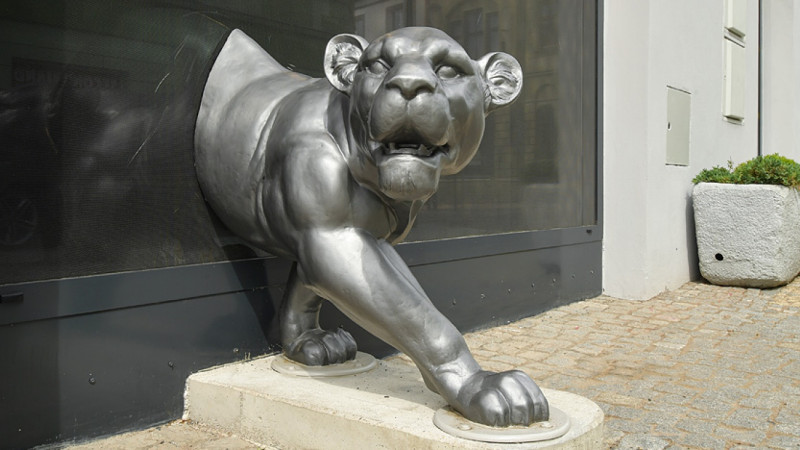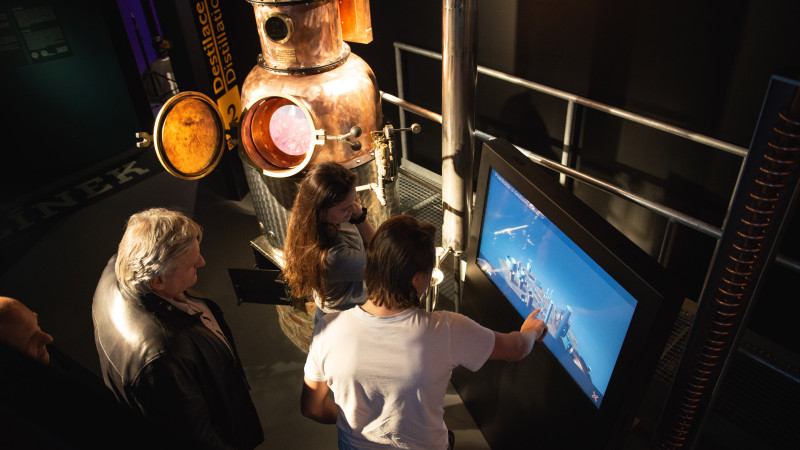
Nature Vault in Horní Lideč
The new interactive exhibition is designed to reach out to visitors and highlight the nature of which we are part of.
The goal of the new exhibition project was to create a space that will increase the attractiveness of cultural and natural heritage for residents of and visitors to the cross-border region. The exhibition introduces visitors to the attractive topic of preserving and appreciating the natural heritage of the border area on the Czechoslovak border, at the unique junction of 4 protected landscape areas - Beskydy, White Carpathians, White Carpathians in Slovakia, Kysuce in a modern and dynamic way. The exhibition is intended for the general public, pupils of primary schools and the students of secondary schools and universities as well as for the middle generation with an overlap to the older generation and young children.
Where do you store the valuable things you want to protect? In a vault, of course. In Horní Lideč, they know the ways and means well and put our natural treasures that need to be preserved and protected in the vault.
The modern exhibition works with people's emotions, which help to better remember the presented event, object, plot or information. However, it also gives the visitor the opportunity to relax in the quiet exhibition zones. The original educational and informative role of the museum exhibition is extended with playfulness (the so-called edutaiment), the possibility for visitors to intervene in the plots, participate in them, touch the items, control them and interact with them, i.e. functional and purposeful interactivity between the exhibition and the visitor. We consider it essential to maintain a balance between the desire to educate and inform through classical static means (replicas, graphics, texts, projections without interaction) and “action”, i.e. the methods using AV technology, interactive 3D models, sound and light effects and “games”.
The emphasis is on emotions, visitor interaction, connection with nature and education. The exhibition itself is then designed with a staff guide. Each section of the exhibition (in both Hall A and C) functions independently and has its own unique scenographic concept. The primary languages for the exhibition are Czech and English.
From a distance, the building already looks like an impregnable vault and encourages visitors to explore its contents.
Hall A
Thanks to the all-embracing large-format projection (Edge Blending), the visitor finds himself or herself in the middle of the natural scenery. The visitor becomes part of a very emotional narrative about nature, the natural elements and man's impact on nature. The space is realized as a perfect "black box", which means that visitors can enjoy a unique film experience on atypical projection surfaces, which they can also walk through. It is a fringe projection, which, thanks to the material used, looks great and creates unique visual effects that, in combination with the emotive audio, create a perfect audiovisual experience.
Hall C
The exhibition in Hall C offers visitors many interactive educational and entertaining elements. The architect has succeeded in creating a monumental space that surrounds visitors on all sides. You can look up into the treetops, which move slowly above you as if the wind is blowing into them, with nature breathing down on you all around. It's as if you zoom in on a place you want to visit and gradually get closer.
First you can see the whole area from a global perspective, where you have to find the Carpathian Arch on a model of the globe, then on a map of the Czech Republic and Slovakia you will find all four protected landscape areas marked and a large walking map will introduce you to the most interesting places of the protected landscape area in a very entertaining way. In the spirit of “finger on the map”, the visitor takes an interactive graphic panel on wheels, the so-called “stump”, with which he/she moves around the walking map and gets acquainted with twenty selected places of the area. At the back of the exhibition are the terrains of the White Carpathians and the Beskydy Mountains, which have many interactive audiovisual elements embedded in them that introduce visitors to the local fauna and flora.
”Suddenly, a cut through the terrain came to life and the life of the animal kingdom unfolded in front of us. Virtual magnifying glasses were part of the terrain, where realistic magnifications of animal details gradually appeared. Suddenly a fox bared its teeth at us and we got a pretty close look at a butterfly. At the end we had a fun quiz to test our knowledge. We were probably the most frightened when we entered the bear's den and it growled at us. It caused an unexpected moment of surprise, which made us all laugh a lot,” says 6-year-old Kubík.
The Vault Exhibition
The Nature Vault exhibition is designed to reach out to visitors across all generations and highlight the nature we are part of. The main attraction why visitors should enter the giant, nine-metre-high, 1,200-square-metre hall is not only the interesting architectural appearance of the building, but especially the modern, dynamic exhibition space, which visitors can already admire from the outside, thanks to the large glass surfaces. Part of the multifunctional space is the aforementioned interactive exhibition, which is spread over two halls. The first of them provides visitors with an unforgettable cinematic experience through a large-format projection (Edge Blending), which presents the natural beauty of the border area to visitors on three atypical projection screens. While this space is a perfect black box, the second space, which contains the multimedia exhibition, is bright and, thanks to the chosen colour composition, the visitor can feel as if he or she has entered the landscape. Thus, he can explore the richness of the four protected landscape areas - the Beskydy Protected Landscape Area, the Kysuce Protected Landscape Area, the White Carpathians Protected Landscape Area and the White Carpathians Protected Landscape Area in Slovakia. There are many interactive and haptic "toys" in this part of the exhibition. For example, there are interactive graphic panels on wheels, the so-called stumps, which visitors can use to move around the map and learn more about the area through QR codes placed in the map.





















